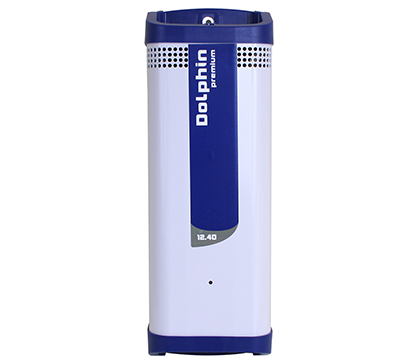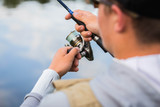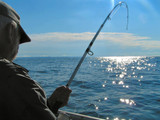Selecting the Best Trolling Motor Battery
Getting your fishing boat ready for a successful day out on the water starts with choosing the best battery for your trolling motor. Proper selection is vital for a smooth fishing experience, as it offers dependability, efficiency, and long-lasting performance.
Find out how to choose the right battery for your trolling motor by understanding compatibility and exploring different types, from standard wet cell batteries to advanced lithium-ion ones. This knowledge will improve your fishing trips and help you get the most out of your gear.
The Importance of Motor and Battery Compatibility
Choosing the correct battery for your fishing equipment is essential for optimal performance and durability. But you need to ensure that your trolling motor and battery are compatible; a mismatch can lead to power inefficiencies, overheating, a shortened lifespan for both components, and increased safety risks.
Tips for Determining Compatibility
To ensure you select a compatible trolling motor and battery combination, consider the following tips:
- Voltage matching. Verify that the battery’s voltage matches your trolling motor’s requirements. The first step is to consult your trolling motor’s user manual or specifications. This document should clearly state the required voltage. Trolling motors commonly operate on 12, 24, or 36 volts.
- Amperage hour rating. Evaluate the amperage hour rating of the battery to gauge its capacity. A higher rating translates to a more extended runtime, which is essential for all-day fishing trips.
- Physical dimensions. Confirm that the battery’s size and dimensions are suitable for the mounting space on your boat. Proper fit prevents issues during installation and safeguards against potential damage.
- Manufacturer recommendations. Check the manufacturer’s recommendations for the trolling motor and battery. Manufacturers often provide guidelines and compatibility charts to assist users in selecting the right combination.
Types of Trolling Motor Batteries
All batteries use chemical reactions to create electrical energy. The difference between marine battery types depends on the chemicals and components used, which can affect the battery's efficiency, longevity, and cost. There are typically three types of trolling motor batteries available for you to choose from:
Wet Cell Batteries
Wet cell batteries are a traditional choice, known for their affordability. These lead-acid batteries are designed for deep-cycle use, allowing them to handle frequent discharging and recharging.
Lead and lead dioxide plates are immersed in sulfuric acid and water-electrolyte in a lead-acid battery. During discharge (such as when powering a trolling motor), this acid reacts with the plates, forming lead sulfate and water, releasing electrons for electrical power. Charging reverses this reaction, converting lead sulfate and water back into their original components and restoring the battery’s charge.
While wet cell batteries offer a cost-effective solution, they require consistent periodic maintenance. You need to check and refill the water levels, clean the terminals of salt residue and debris, and keep the battery charged to ensure optimal performance.
AGM Batteries
AGM (Absorbed Glass Mat) batteries offer a more advanced option than wet cell models. They generate power similarly to wet cell batteries but feature a fiberglass mat between the lead plates, absorbing sulfuric acid like a sponge. This makes them leak-proof and mountable in various positions.
Because they’re sealed, AGM batteries are maintenance-free, meaning you won’t have to worry about topping off water levels. While AGM batteries come at a higher cost than wet cell batteries due to higher manufacturing costs, their benefits include resistance to vibration, spillage, and more consistent power output.
Lithium-ion Batteries
Lithium-ion batteries provide almost double the runtime compared to traditional lead-acid and AGM batteries, making them an excellent choice for longer fishing trips.
Lithium-ion batteries move lithium ions between two electrodes – the anode and the cathode – via an electrolyte. Lithium ions travel from the anode to the cathode through the electrolyte when the trolling motor is in use, creating a flow of electrons in the external circuit that powers the motor. The lithium ions return to the anode when charging, readying the battery for its next use.
They are extremely lightweight, offering up to 70% reduction in weight, which is beneficial for smaller boats like kayaks, canoes, or zodiacs. Lithium-ion batteries are a cost-effective choice in the long run, with a lifespan of up to a decade.
Lithium-ion batteries boast a 100% depth of discharge, ensuring full power regardless of the charge level. They also deliver more power during rapid acceleration, which is ideal for managing the high-cranking torque demands of trolling motors.
What to Consider When Choosing a Trolling Motor Battery
Choosing the right trolling motor battery involves more than just picking the most powerful one. Factors like battery lifespan, capacity, and weight are vital considerations when shopping for a trolling motor battery.
Battery Capacity
Battery capacity, measured in ampere-hours (Ah), influences how long your trolling motor can run on a single charge. The higher the Ah rating, the longer the battery will provide power. To determine the appropriate battery capacity for your needs, consider factors such as the size of your boat, the desired runtime, and the trolling motor’s power consumption.
For instance, a trolling motor with a power rating of 60 watts (W) operating on a 12-volt (V) system would require a minimum capacity of 5 Ah for one hour of operation. A battery with at least 100 Ah is recommended for trolling motors, providing ample power for most fishing trips.
Battery Lifespan
The lifespan of a trolling motor battery is a crucial consideration for long-term cost-effectiveness. Lead-acid batteries, characterized by their PbSO₄ₖchemistry, typically offer a lifespan spanning 2-3 years under standard cyclic conditions. AGM batteries can provide power for up to 7 years due to improved cyclic stability.
Lithium-ion batteries, with LiFePO₄ chemistry offer excellent longevity, lasting up to 10 years due to reduced electrode degradation. When assessing total ownership cost, it’s essential to factor in lifespan along with the initial investment.
Battery Weight
The overall battery weight affects how your boat moves in the water. Traditional lead-acid batteries are quite heavy, making it harder for your boat to maneuver in tight spaces like narrow channels, crowded marinas, or shallow inlets.
Because lead-acid batteries are primarily made from lead and require more rugged materials to build the housing, they are heavier than lithium-ion batteries. Lithium-ion batteries also have a much higher energy density at 150-200 Wh/kg than lead-acid batteries at around 30-50 Wh/kg. This means that lithium-ion batteries can be much smaller and lighter for the same amount of energy storage.
This means they contribute less weight to your boat, allowing for better agility without compromising energy storage.
Recharge Time
Efficiently replenishing energy is essential to minimize the time your boat’s downtime. Check your battery’s recharge rate to determine if you have enough power to propel your boat without leaving you stranded.
AGM batteries, with their low internal resistance, support charging cycles up to five times faster than flooded lead-acid batteries. You can speed up the charging time using compatible smart chargers with Pulse Width Modulation (PWM) techniques.
Lead-acid batteries take longer to recharge, typically hitting 70% in around 8 hours, because of limitations in electrolyte absorption and gassing tendencies. You can monitor Charge Acceptance Rate (CAR) metrics and voltage regulation parameters to ensure efficient charging and maintain battery health.
Durability and Maintenance
Battery durability impacts reliable operation and maintenance needs. Lead-acid batteries require regular maintenance, including checking electrolyte levels and preventing terminal corrosion, to ensure they work well and last a long time.
AGM batteries come with sealed construction, reducing maintenance requirements and improving resistance to shock and vibration. Lithium-ion batteries, with their advanced Battery Management Systems (BMS), offer increased durability with minimal maintenance needs, suitable for demanding marine use.
Top Trolling Motor Batteries
Whether you’re a weekend angler or a seasoned pro, explore some of the best marine batteries on the market to find the suitable model for your trolling motor:
- VMAX Deep Cycle Marine. The VMAX MR127-100 is designed for marine applications, ensuring a consistent energy output for continuous trolling motor performance. It’s sturdy construction and reliable power make it a standout choice for anglers seeking durability on the water.
- Deka Intimidator. Engineered to withstand challenging conditions, the Deka Intimidator 9A34 is a powerhouse offering maintenance-free operation. Ideal for extreme marine environments and compatible with high-end Minn Kota models like Ulterra, Terrova, and Ultrex, this battery provides reliability without compromising on weight.
- Optima Blue Top. Offering a versatile option between lithium and traditional AGM batteries, the Optima Blue Top excels in delivering performance and efficiency. Its well-balanced features make it an optimal choice for anglers seeking a reliable and adaptable trolling motor battery.
- Bass Pro Shops Deep Cycle. Known for its accessibility and budget-friendly features, this battery doesn’t skimp on technology. It is a reliable choice for various trolling motor applications, making it an attractive option for anglers seeking quality on a budget.
While selecting the correct battery is essential, battery chargers and accessories are equally critical for maximizing performance. FISH307 offers a range of options, including brands like Vexilar, Dolphin Premium Series, and Dual Pro. These accessories can extend your battery life and ensure your trolling motor operates at its peak.

Tips for Maximizing the Performance of Trolling Motor Batteries
To ensure optimal performance and longevity of your trolling motor batteries, consider implementing the following practical tips:
- Proper charging and discharging. Always adhere to the manufacturer’s charging recommendations
and use a compatible charger. Avoid overcharging, as it can lead to overheating and damage, diminishing the
battery’s overall performance.
Avoid fully discharging the battery regularly. Instead, recharge it before reaching critically low levels to extend its lifespan. - Regular maintenance. Periodically inspect the battery terminals for signs of corrosion. Clean them using a mixture of baking
soda and water.
Corrosion can inhibit the flow of electricity and impact performance.
For wet cell batteries, monitor and top off fluid levels as needed to prevent potential damage caused by low electrolyte levels. - Safe storage. Store the battery in a cool, dry location, away from direct sunlight and extreme
temperatures. Extreme heat can accelerate the chemical reactions inside the battery, leading to premature aging
and reduced performance.
If storing the battery for an extended period, consider maintaining a trickle charge to keep it at an optimal level. - Monitor usage. Keeping an eye on your battery’s power level is essential for preventing
unexpected disruptions during fishing excursions. Most trolling motor batteries come equipped with a
battery-level indicator.
Regularly check this indicator throughout your trip, and if the level is low, adjust your trolling motor’s speed or switch to a propeller with less resistance. - Perform a capacity check. Periodically perform a capacity check on your trolling motor battery
to assess its overall health and performance. This involves testing the battery’s ability to deliver a specific
amount of current over a set period.
Many batteries come with a specified Ah rating, and a capacity check helps verify if the battery still meets or exceeds this rating.
Enjoy Longer Fishing Adventures with FISH307
Experience the thrill of day-long fishing trips by choosing the best battery for trolling motors from FISH307. Our team of passionate anglers is committed to helping you find the perfect battery to power your adventures.
Contact us today at FISH307 to connect with our angling professionals and discover the ideal solution for your fishing needs.
Recent Posts
-
Best Time To Go Fishing
Finding the perfect time to go fishing can increase your chances of a successful catch. Whether y
-
Saltwater Fishing Tips
Saltwater fishing combines skill, patience, and a bit of luck for limitless adventures. From the




